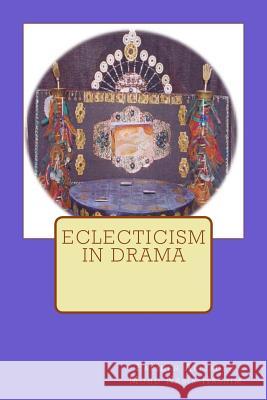Eclecticism in Drama » książka
Eclecticism in Drama
ISBN-13: 9781522899105 / Angielski / Miękka / 2016 / 124 str.
This present book proposes Eclecticism and analyses a kind of Eclectic Theatre in Iran which finds based on Ta'ziyeh. In general, Eclecticism describes a combination of a variety of influences, mainly of elements from different historical styles in architecture, painting, the graphic and decorative arts, as well as music in a single work. Eclecticism as a theatrical form was developed particularly by two directors: Max Reinhart, and Yevgeny Vakhtangov. 'Orghast', 'Conference of the birds' and 'Mahabharata' by Peter Brook are some examples of eclectic theatre in the West. Eclectic Theatre is a kind of new theory in postmodern theatre studies which can be manifested in connection with theatre activities of Iran. Based on our research, Eclectic Theatre found in Iran with 'Iranian Kings Resurrection Opera' (Rastakhiz Salatin Iran Opera). This Opera is an early example by Yahya Aranpour who reveals that Mirzadeh Eshghi merged western opera with Iranian theatre and brought out a new style of opera, and classified as Eclectic Theatre based on theatrical forms. In addition, 'Firdausi's memorial' which includes three stories from 'Shahnameh Firdausi' (the epic and legendary history of Iran by Firdausi). Moreover, some Iranian directors and playwrights have been derived from elements of Iranian traditional forms and merged them with western elements theatre. Therefore, they created new works of art which made based on their aesthetic principle. Subsequently, since the 1980s (AH 1360s) some Iranian dramatists have applied the 'form' and 'content' of Ta'ziyeh in their dramas. To name a few, for instance: Fath-Nameh Kalat in 1984, the cinematographic Mosaferan (Passengers) and the plays Parde-khane by Bahram Beyzaie in 1993 have taken from tragedy Ta'ziyeh. 'The Tragedy of Siavush' by Tahmoures in 2009 which dramatic structure involved with the elements of the 'Ta'ziyeh of Imam Hussain's Martyrdom'. Therewithal, Ghadamshad the Minstrel's Martyrdom-Playing in Tehran by in 2006 and Ashaghe (Story of Love) in 2007 by Mohamad Rahmanian are taken from subsequently tragedy and joyful Ta'ziyeh such as 'feminine Ta'ziyeh'. For the purpose of this study, the author will analyse some plays, based on Eclectic Theatre, as clear examples of Ta'ziyeh-influenced theatre as eclectic theatre in Iran. To this purpose, the author has made some classifications and criteria determined by watching plays, based on techniques and methods of Ta'ziyeh, and analysed those plays through eclecticism as an alternative form in postmodern theatre. This method has proved favourable for comparative studies on one part, while the Iranian theatrical forms have been more clear and researchable, on the other.
Zawartość książki może nie spełniać oczekiwań – reklamacje nie obejmują treści, która mogła nie być redakcyjnie ani merytorycznie opracowana.











